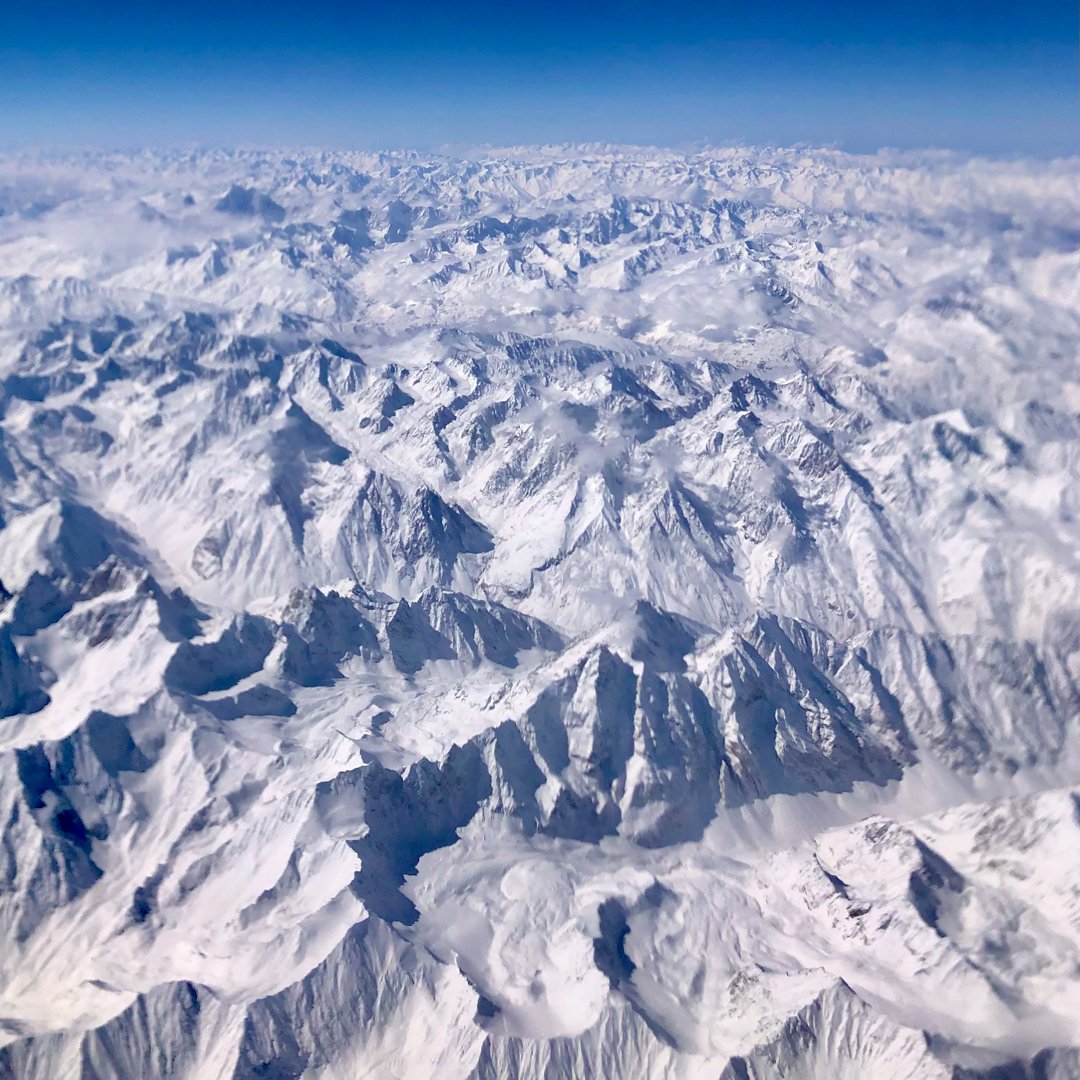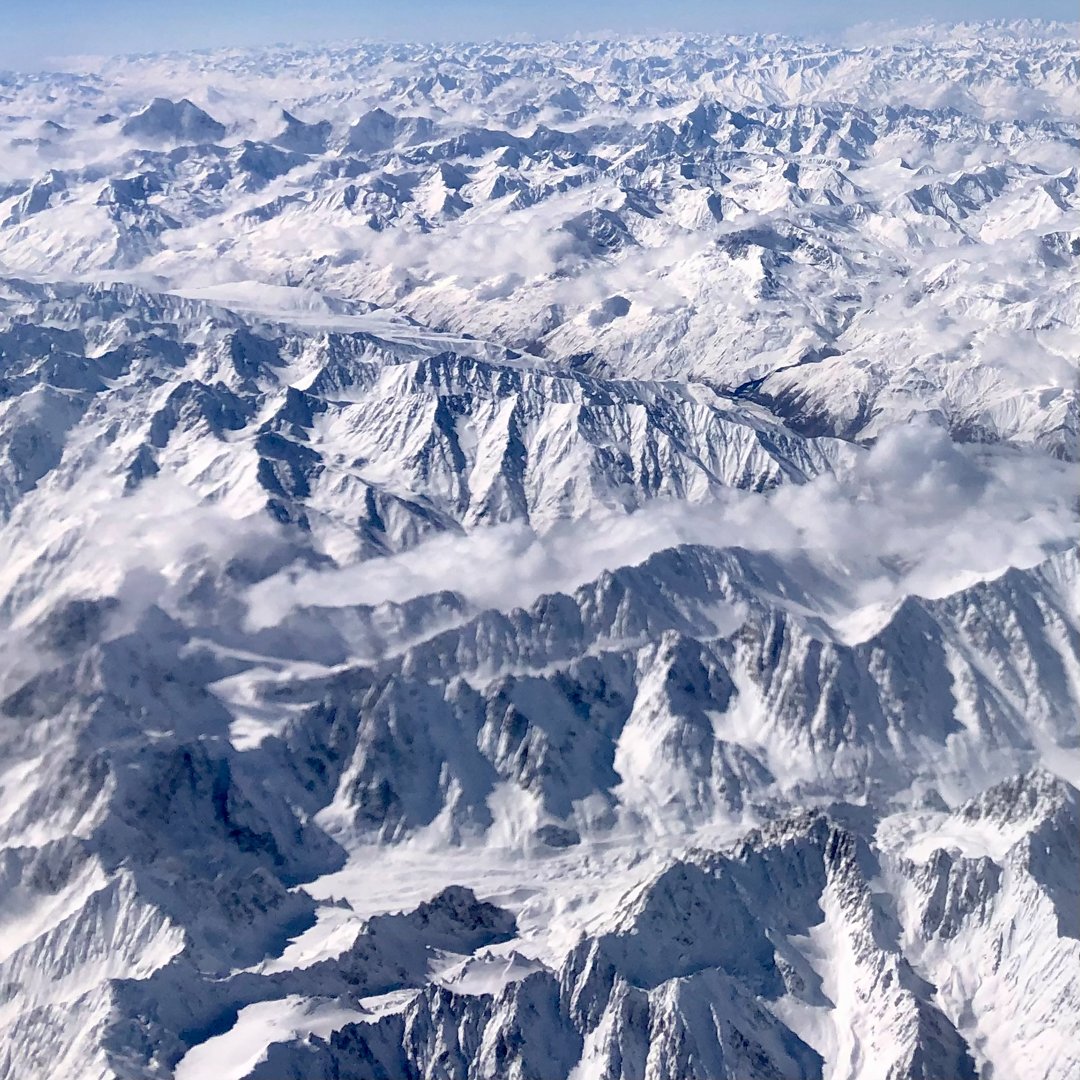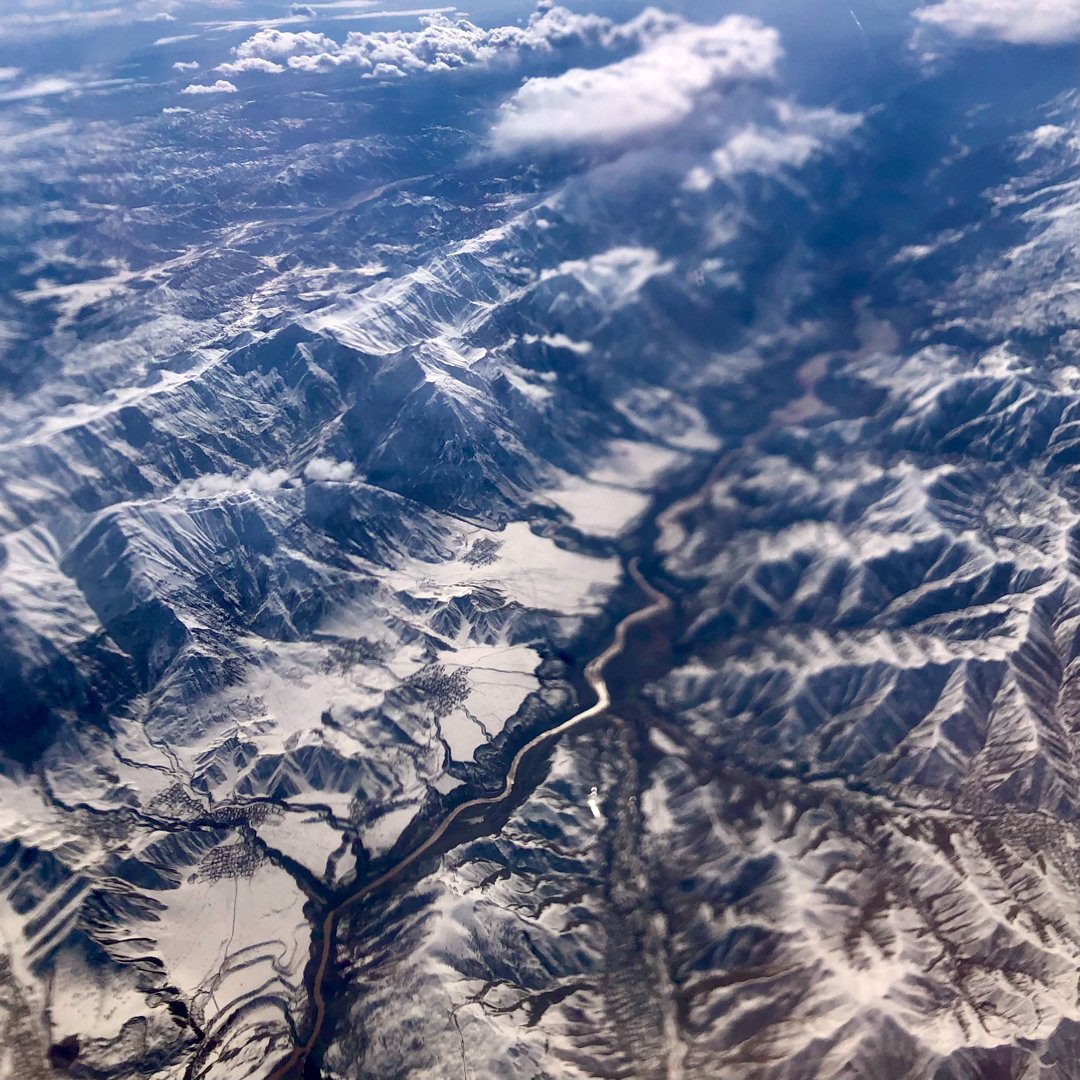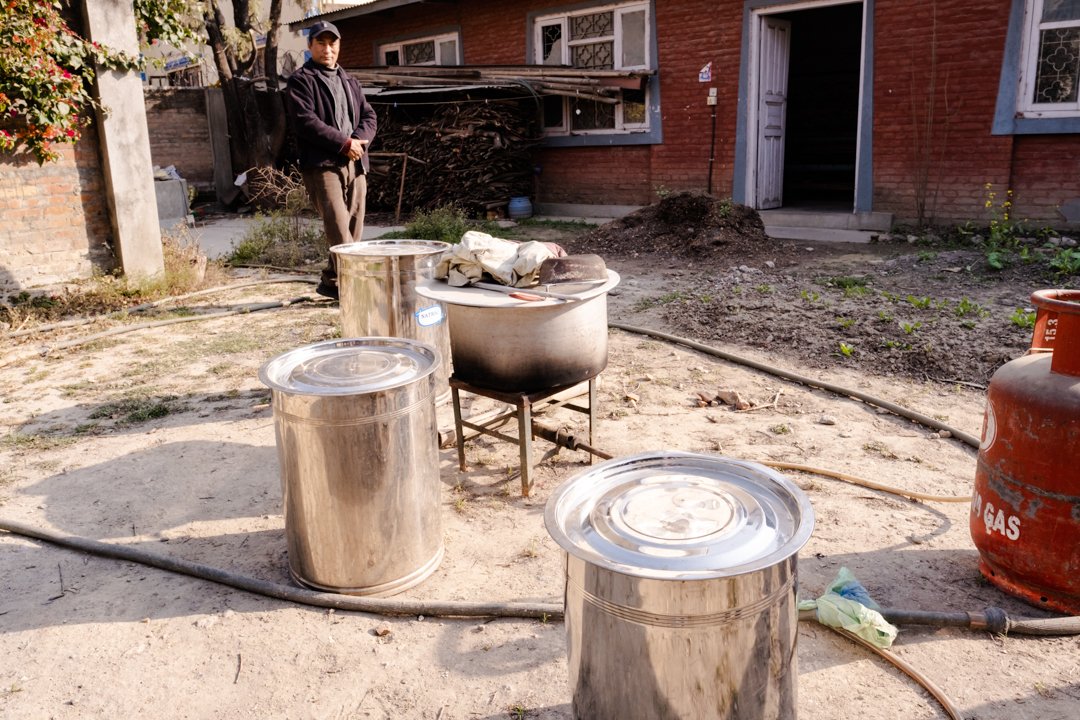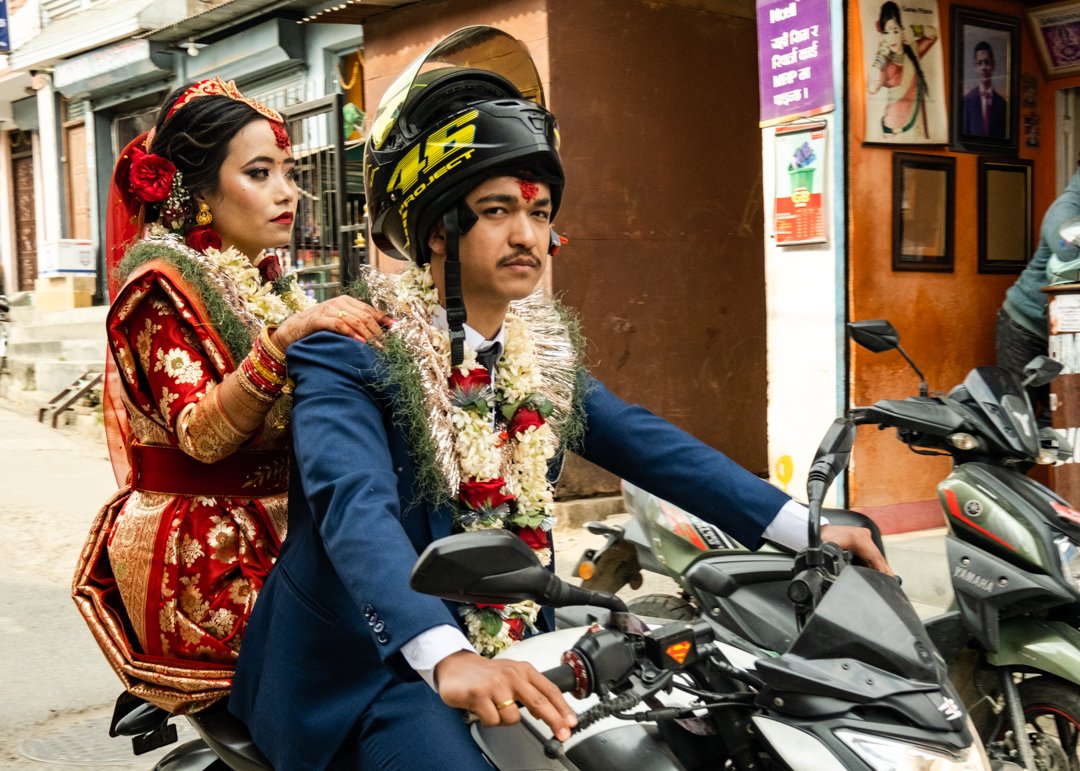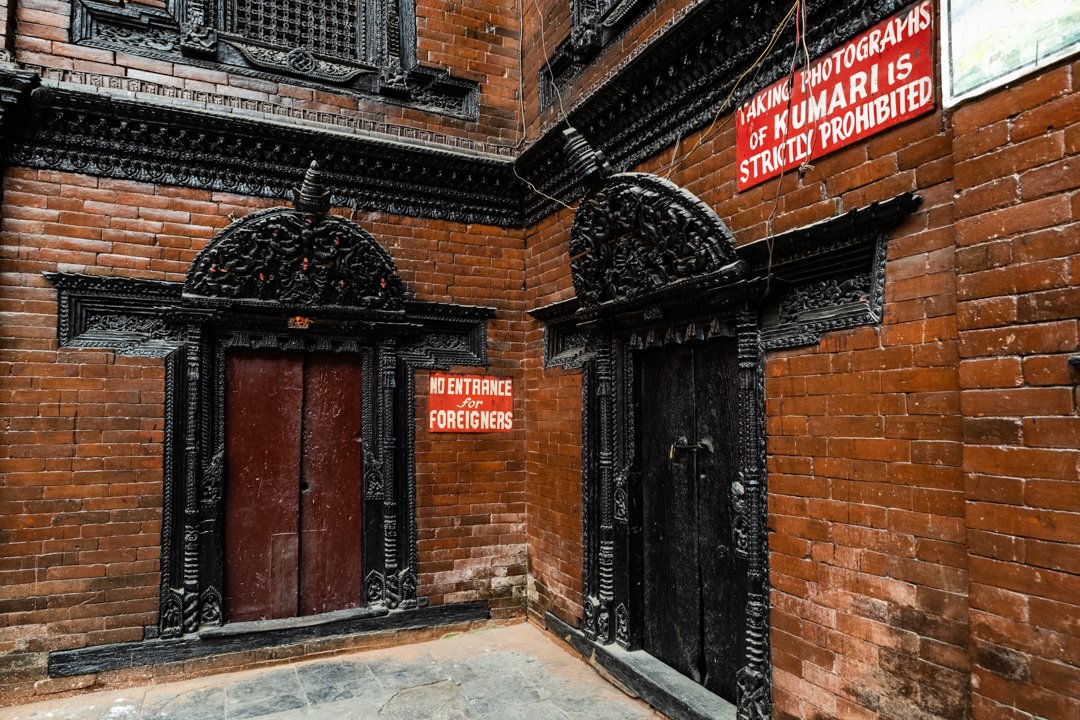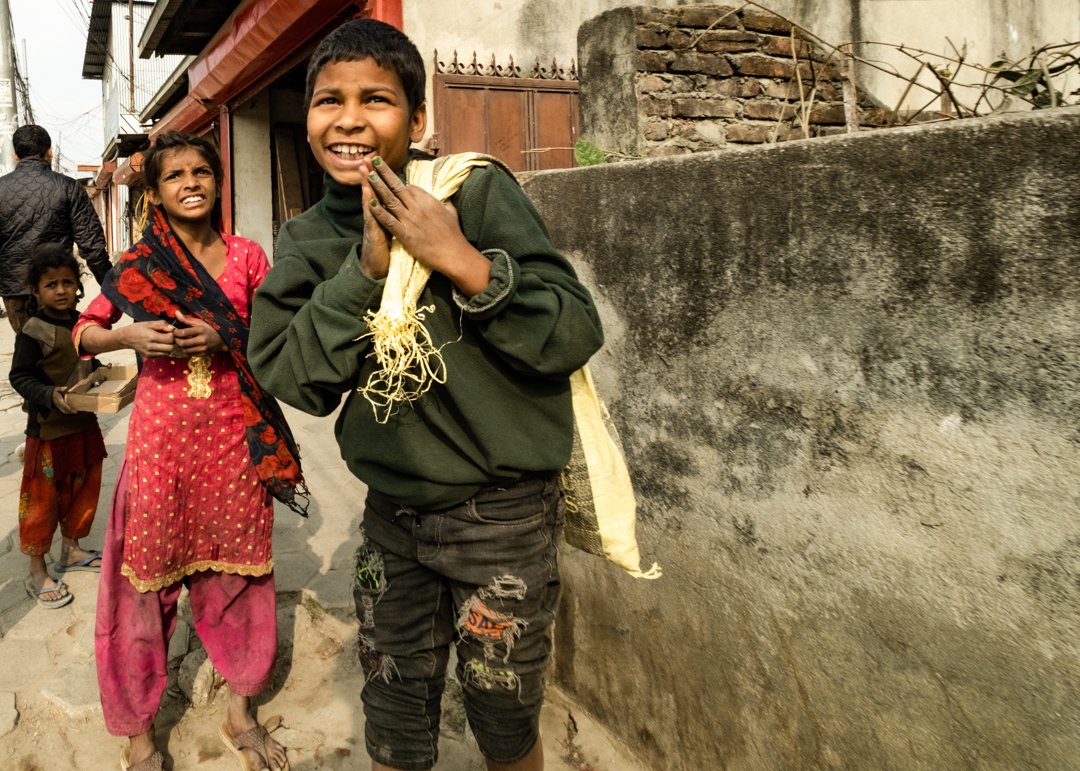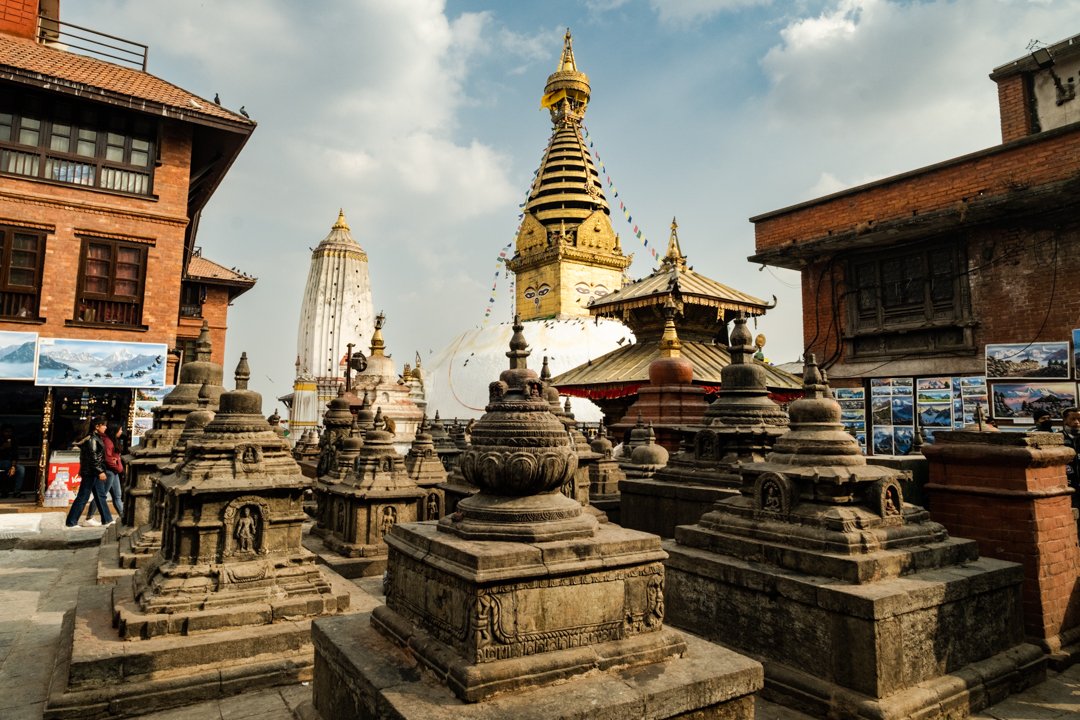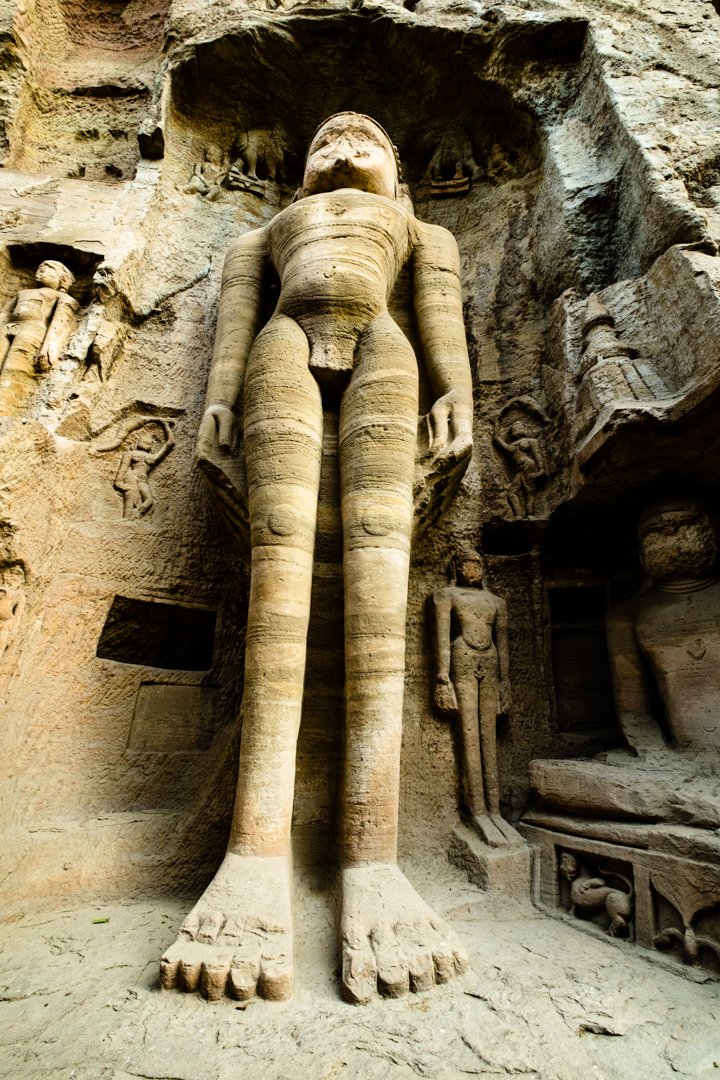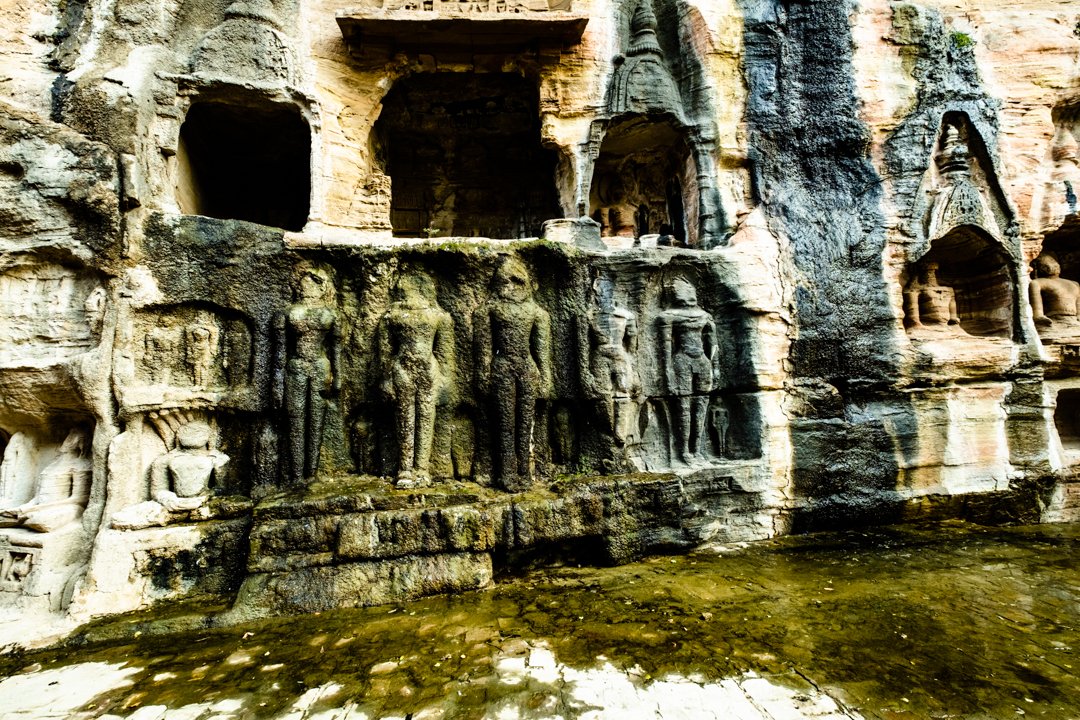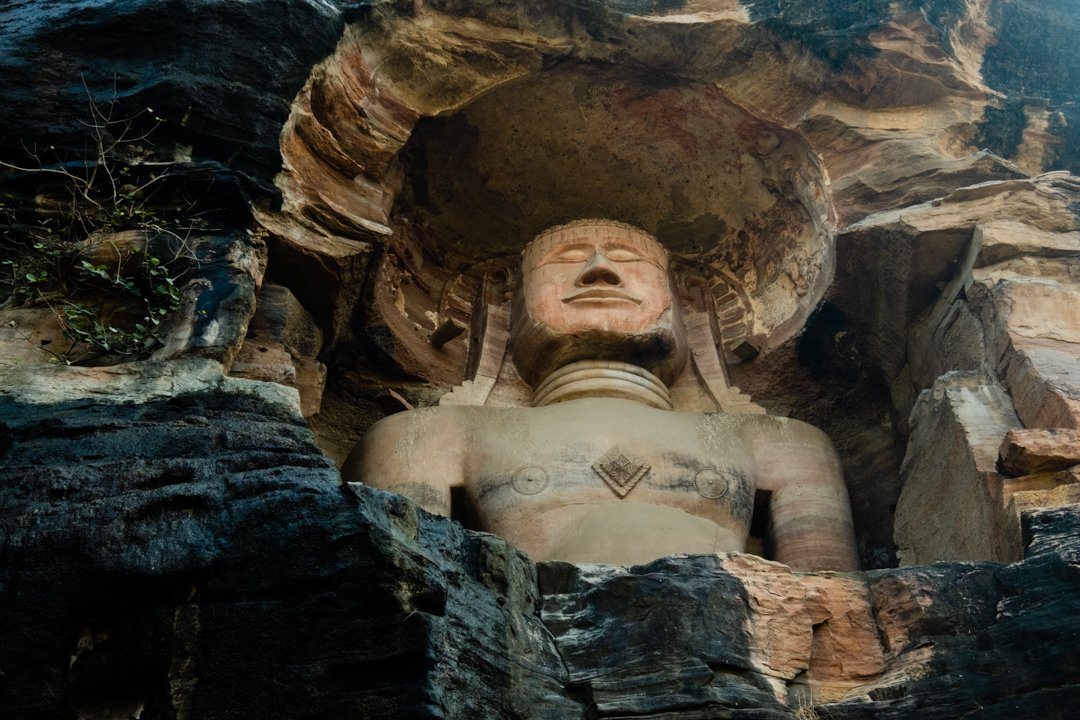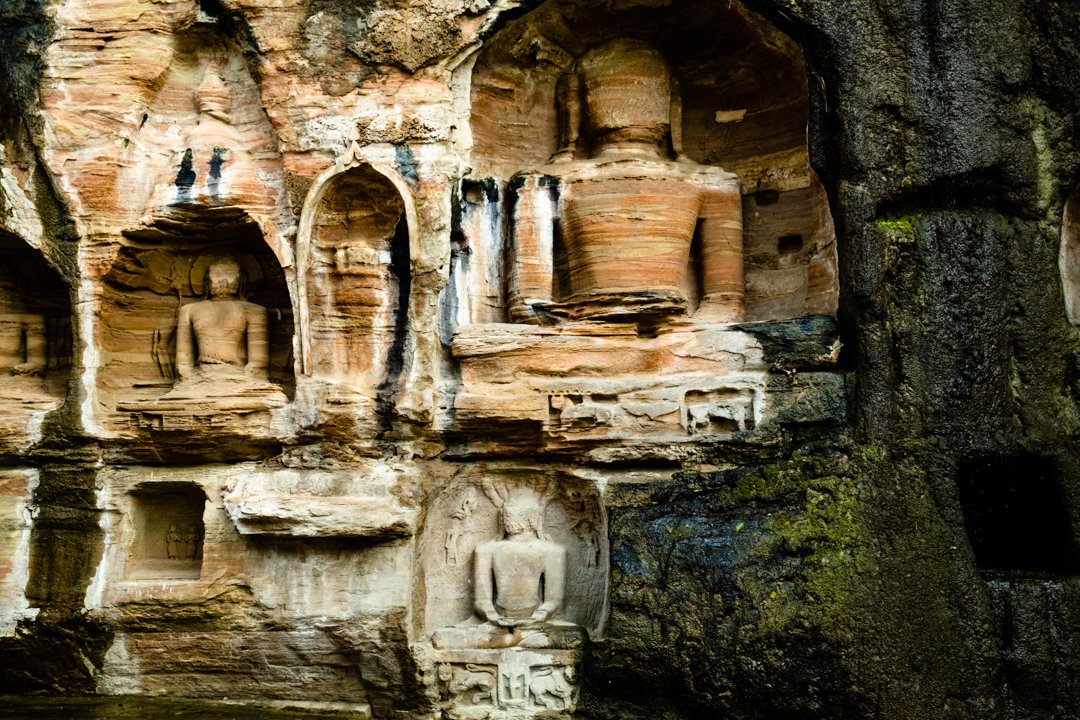We visited the Lung Tam Co-operative where Hemp is woven on traditional looms. Batik is used to create the intricate patterns that the group are recognised by. Having collected some pieces myself of traditional Hmong textiles in Vietnam and Laos, I was delighted to witness their creative skills. A 95 year old lady meticulously draws her patterns in hot wax with the steadiness of hand I could only wish to have myself.
Read Moretravel
A Fair Face May Hide a Fool’s Heart - Vietnamese Proverb. Ben Tre. Vietnam.
Ben Tre provides a large number of coconuts for exporting to countries like Singapore, Malaysia, the Philippines, India and China.
The ecolodge we are staying at provided us with a boat and guide, so off we chugged to explore the land of the coconuts.
Read MoreHappy Together Strong - Train station Advert, Mokpo. South Korea.
Taepyung Salt Fields was our destination, but it appeared closed despite me talking to someone who assured me it was open for visitors. Not wanting to give up, we left the Taepyung Visitors Site and went over to the fields to see for ourselves how the salt was created.
Read MoreRoom with a view. Mokpo.
Good luck if you come from a fried chicken - Google translate, recommendations list. Mokpo
…what I see are vast, flat, empty spaces filled with a diverse ecosystem, with layered mountains forming screens in the distance. The wetlands are tidal and at the time of our visit it was a very low tide. Beautifully empty, beautifully still and beautifully mesmerising.
Read MoreMajang Mexican brushing teeth - Menu, Google translate. Busan.
Nestled into the side of a mountain are the terraced houses of Gamcheon Culture Village. With its waves of colourful roofs and narrow winding alleys.
Read MoreRoom with a view - Nampo.
'I will give you a post-mortem receipt' - sales assistant. Lotte Department Store. Nampo, Busan.
…Food in Busan is no different but it’s on another level. Busan is all about food, especially seafood - there are fish markets, fish stalls, restaurants, night food markets, bakeries - street after street, food is everywhere...
Read MoreRoom with a view - Pungcheon, Andong.
Feel the traces of experts from roasting to extraction - Slogan, coffee shop. Andong
We arrived in Andong and travelled some 25km out to our short pit-stop in Pungcheon. A little Milton Keynes-esk and unfinished. It’s obviously a new town and has yet to establish itself.
Read MoreFamily Solidarity. Mice Banquet - Google translation hotel menu. Gangneung. South Korea.
We travelled by bus through the most atrocious weather, over to the eastside of S. Korea to Gangneung, a coastal city with the ‘scent of pine and coffee permeating throughout’.
Read MoreYour Lean, Clean Flying Machine is Ready - Indigo Airlines Tagline. Delhi Airport.
Our final day of our travels took us back to Delhi. We had unfinished business - the Lodi Colony district. At the beginning of our trip it had been closed off so this was the perfect way to spend our last day. The temperature has hit mid 20s and the sun was shining.
Always good to have a map to find your way.
With the help of various groups, including the residents of Lodhi Colony, Asian Paints and St+Art India the town mural concept was inspired by the sights, sounds and smells of the Lodhi Colony, a residential area which has now become an open art gallery for all, with its enormous murals painted by both Indian and international artists.
The otherwise dull, plain walls of buildings in the colony have been beautifully transformed into a creative ensemble as part of the annual Lodhi Street Art Festival.
Each triple-storey government-owned building features a central arched doorway and four windows where the archway offers a glimpse inside to a courtyard.
In some buildings, the archways frame the trees spilling out into the street.
I loved the way both the new and old trees of Lodhi dynamically became part of each art piece.
Lodhi Art District is home to over 54 murals that take on various themes, from social issues to environmental issues, marginalised and vulnerable communities like LGBTQ to Indian Culture and values. Many of them have been inspired by the residents and visitors of the Lodhi Colony.
Here art isn’t limited to a museum or art gallery or to the elite. It reflects an age of a generation of artists that hold the power to delivering their messages through street art.
Carnatic Cafe provided us with our final meal - the best Dosas and Sambar ever. The perfect ending as we savoured our last sights of New Delhi.
Well that’s it. Our bags are packed and it’s time to head back home to England.
Our final unexpected treat was from our plane window as we began to head home - crossing the mountain range over K2 to Kazakstan.
Its been an interesting trip to say the least, full of unexpected twists and turns and very different to our last visit to India.
Our next adventure begins in a couple of months… I hope you will join me.
Know Disaster No Disaster - Wall graffiti. Thamel. Kathmandu
After our decent from Nagarkot, we had half a day left in Thamel, Kathmandu - time was of the essence… I have been very drawn to the fabrics here in Nepal. Similar to my paper addiction, I also have a fabric addiction, it has developed initially from interior design to now incorporating fabric into my artwork. There is something very different to the feel of Nepalese fabric so I did a bit of hunting and found a contact online, coincidently just down the road from our hotel. A few what’s app messages later and we met Ajay who has a weaving factory. He produces modern raw-silk fabrics using traditional methods and more recently using eco-dying and we were going to visit where the magic happens.
Firstly Ajay took us to his premises in Thamel - a small, modern clothes shop which had just opened for business that very morning. The rooms behind were where the clothes were made before being exported to select countries around the world. Customers can either buy the fabric or the garments.
The Nepal Handloom Silk Industry is the first and only company in Nepal to manufacture and export hand-woven raw silk fabrics and garments. It is currently a 2nd generation business run by Ajay who took over from his father.
The room where the handmade fabrics were stored took my breath away. What is different is that many are created using natural dyes and woven in unique combinations and thicknesses on a hand-loom. I have never seen or felt silk, linen and wool worked like this. These fabrics do not have the conventional weight, look or feel of silk.
Nepal Handwoven Raw-Silk
Nepal Handwoven Linen
Pattern matching for a Japanese client.
After a while we jumped into a car and went over to Ajay’s factory - some bungalows behind his home.
Ajay’s business - ‘Nepal Handloom Silk Industry - uses an aged and traditional style of handloom weaving, which creates fabric with a luxurious feel. The fabrics are woven on an old and long-established Foot–Treadle Floor Loom. Weaving is done by intersecting the longitudinal threads, the warp, i.e. “that which is thrown across”, with the transverse threads, the weft, i.e. “that which is woven” ‘- as explained on his website http://www.nhsi.com.np
In the first building are the foot-treadle floor looms and the spinning wheels. The sound of the looms is magical. The weft takes many days to set up.
The warp is spun the onto spools and they go into the shuttles. The shuttles weave together the 2 layers of weft. The tension determines the weight and feel of the raw-silk.
Spinning the spools for the shuttle
In the second bungalow are some enormous pieces of machinery that are dedicated to the semi-automated weft alignment. The weft is set up for the desired meterage then transferred on a large roller to the loom where is it fed through all in perfect alignment. They do not make the weft, the thread is bought locally. This saves some time setting up the foot-treadle floor loom, especially with large lengths of fabric.
The roll of weft can allow around 20 - 40 meters of fabric to be woven,
Nepal Handloom Silk Industry first started dealing in Linens in the year 2005. Linen yarns are imported from China and India, then all the manufacturing process is done in Nepal. Like the process of manufacturing Handloom Silk and Pashmina, they use the old Foot–Treadle Floor Loom for weaving Linen fabrics.
The sad fact is that there is a decline in weavers. It is an artisan job but has never been well paid. Ajay is doing his best to raise the profile of weaving but youngsters are not really interested in this career choice. He has a small but talented team which I hope he can build on in the future. It would be a shame to lose this craftsmanship.
Ajay loves experimenting with the different weaving combinations of the raw silk or linen. His natural creations are beautiful and unique.
2 colourway raw-silk and avocado dyed linen.
Ajay has begun exploring eco-dying. Indigo - deep blue, avocado stones - pink, pomegranate - green/yellow, marigold - yellow/ orange and madder - vivid red with beautiful results. Only relatively small pieces can be dyed at a time mainly to ensure continuity within one garment.
Ajay has begun growing some of the relative plants in his garden - some with mixed success. Patience is required as it can take up to three years for a plant to yield any fruit. The monkeys from the nearby temple also pose a future threat to the success of the fruit supply.
After a cup of tea we returned to the office to collect a beautiful selection of raw silks that shall be put to good use back in the UK.
A few of the raw silks coming home with me
What a wonderful, spontaneous experience. Thank you Ajay!!
Farewell to the huge, beautiful mountain range and a country filled with beautiful people. How can we not return.

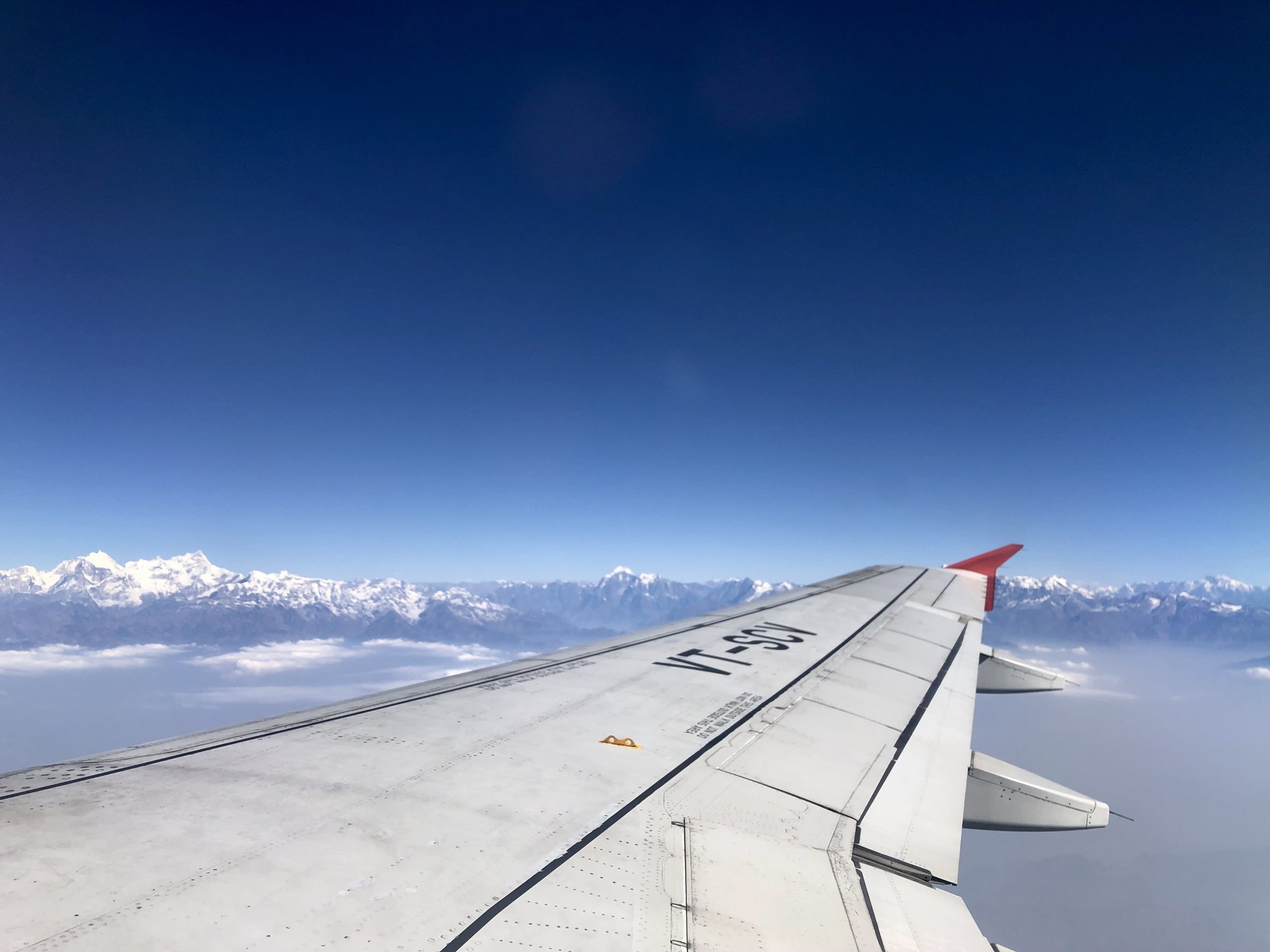
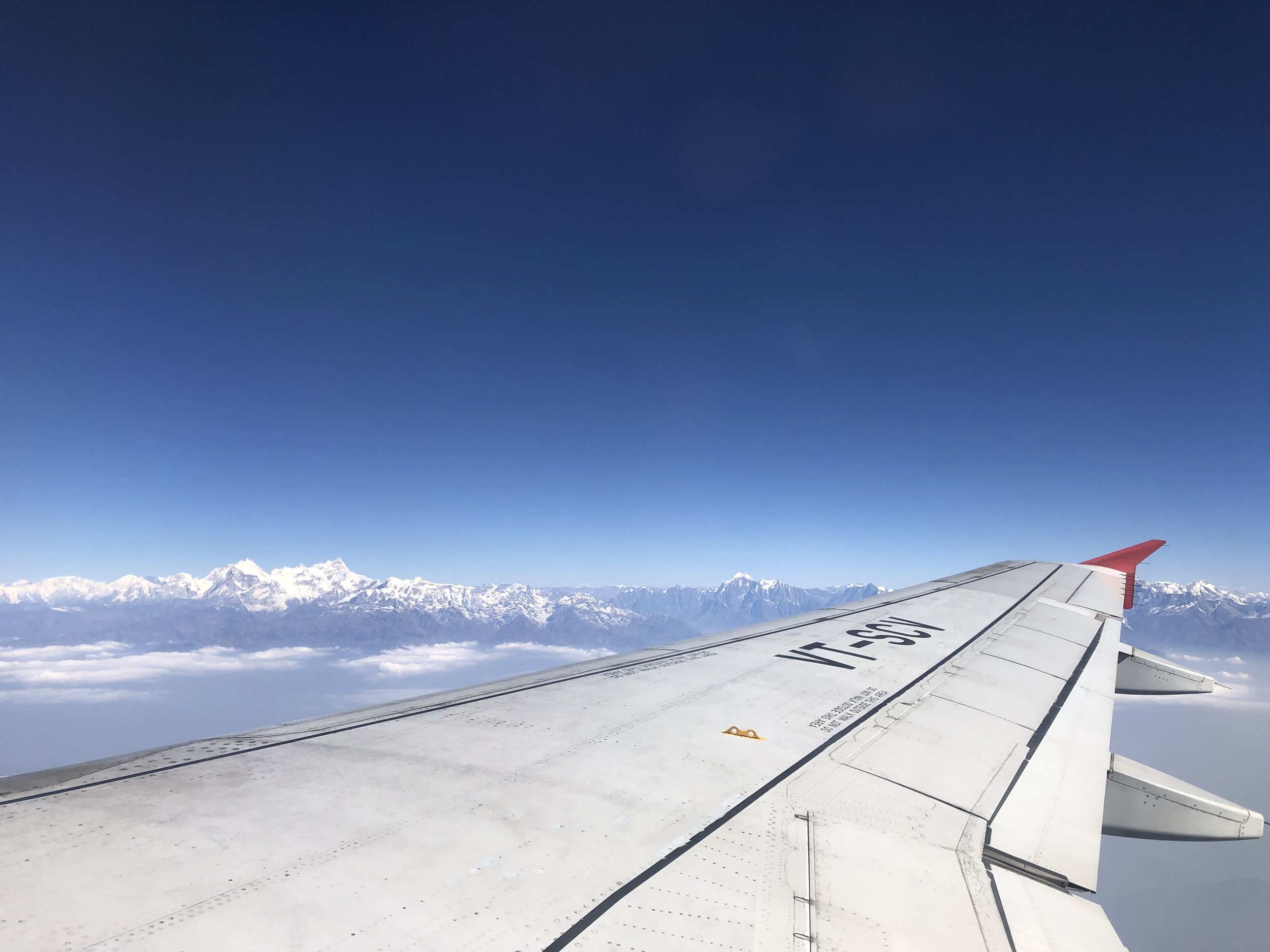
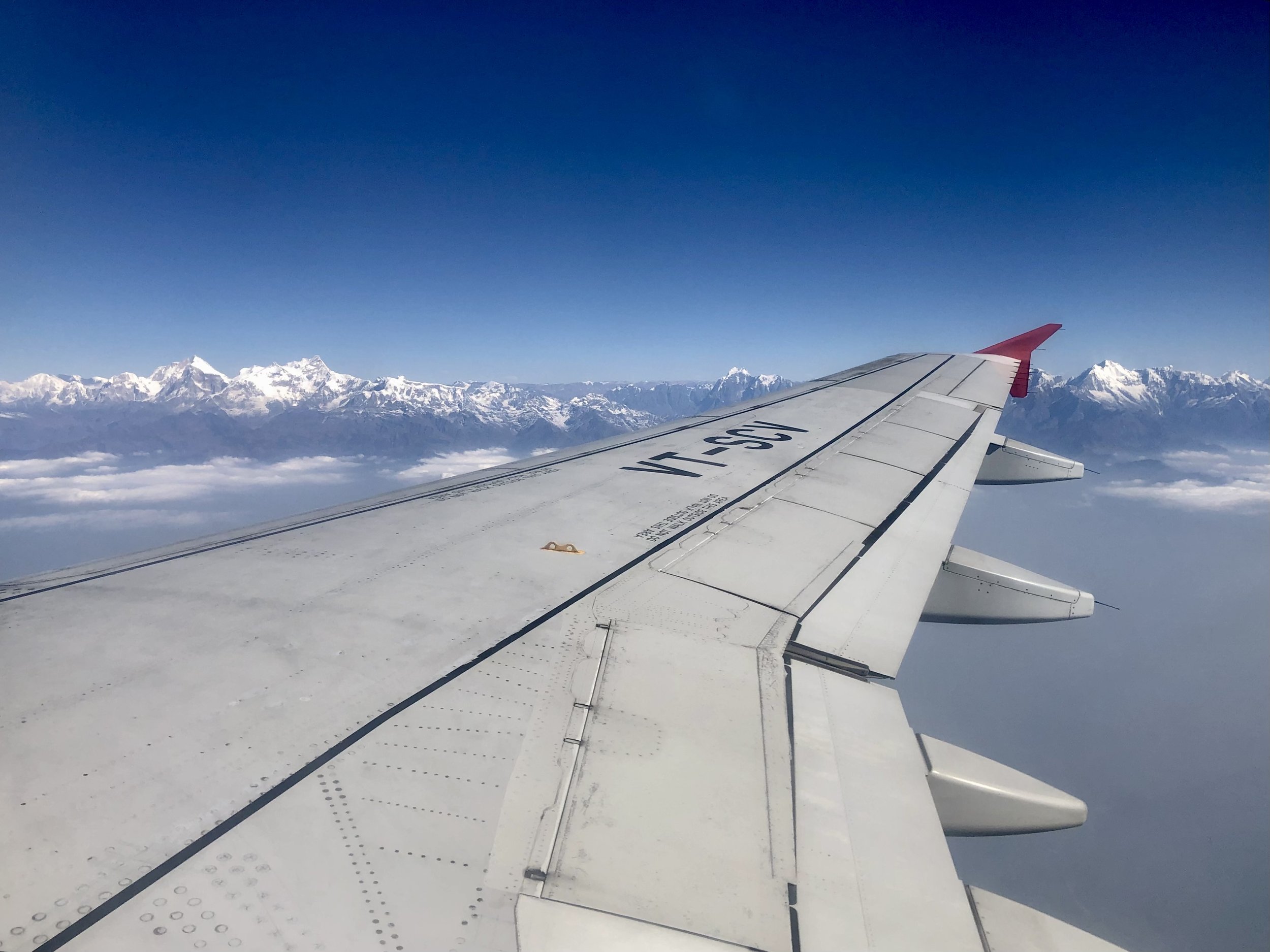
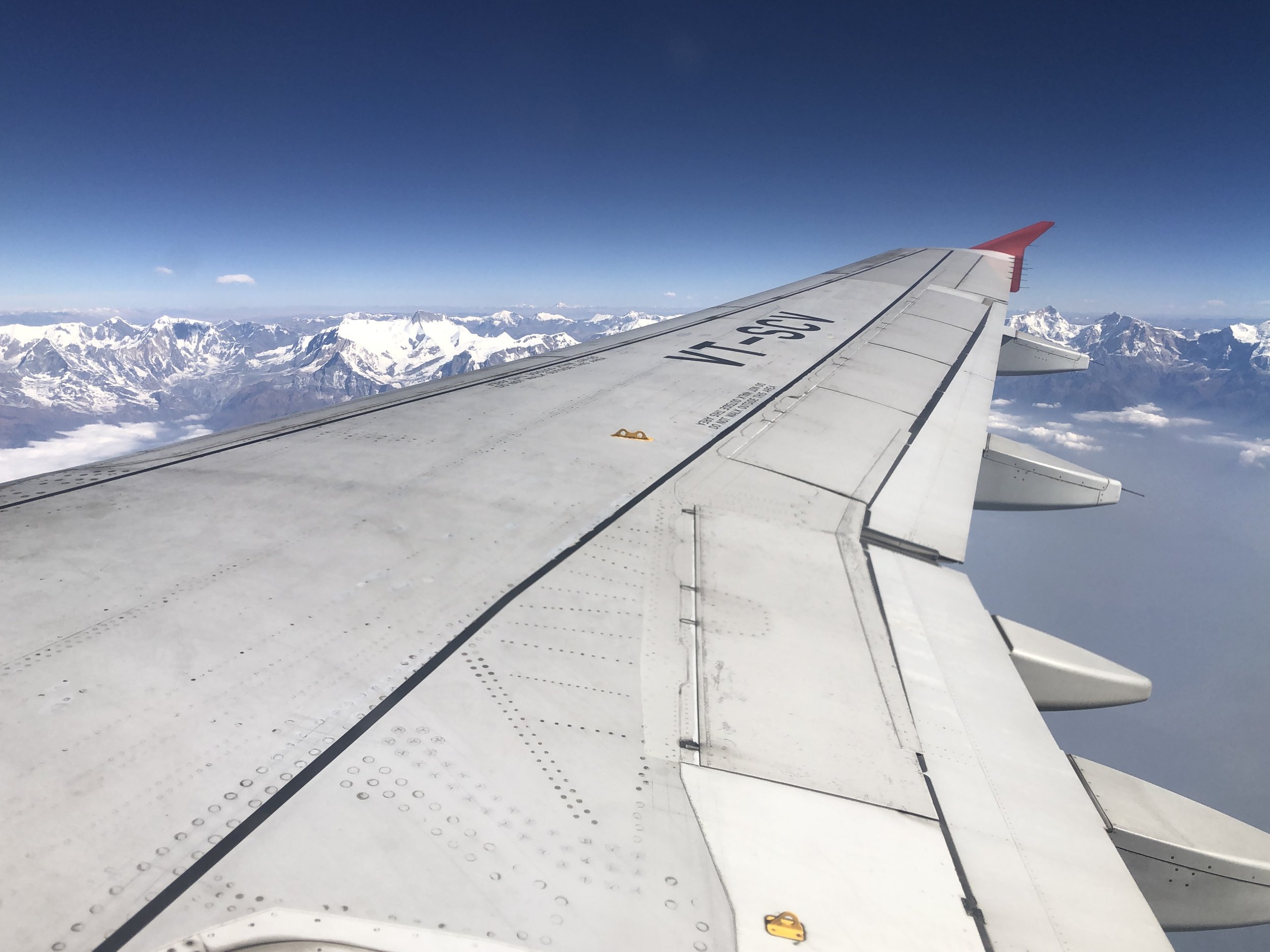
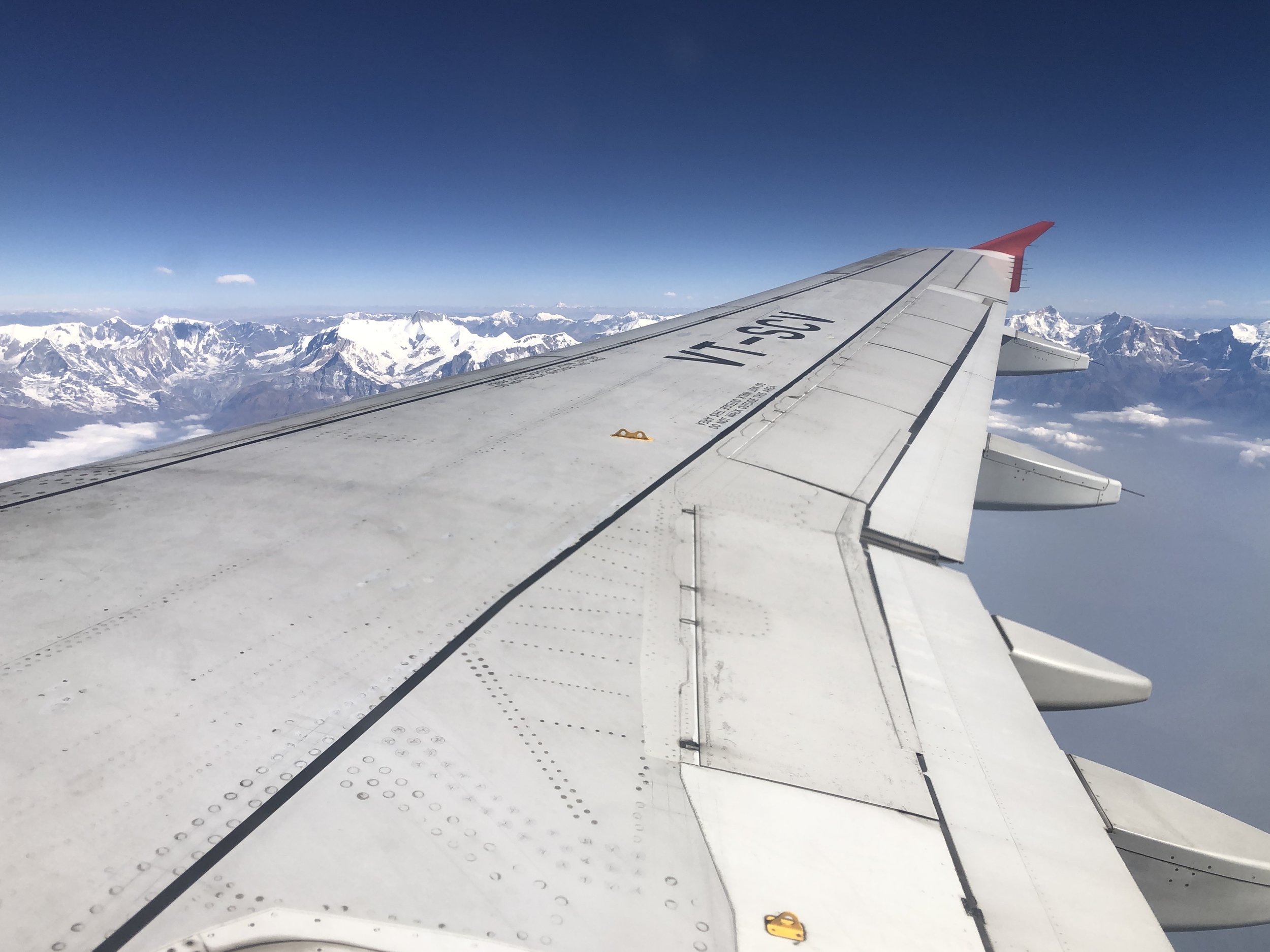
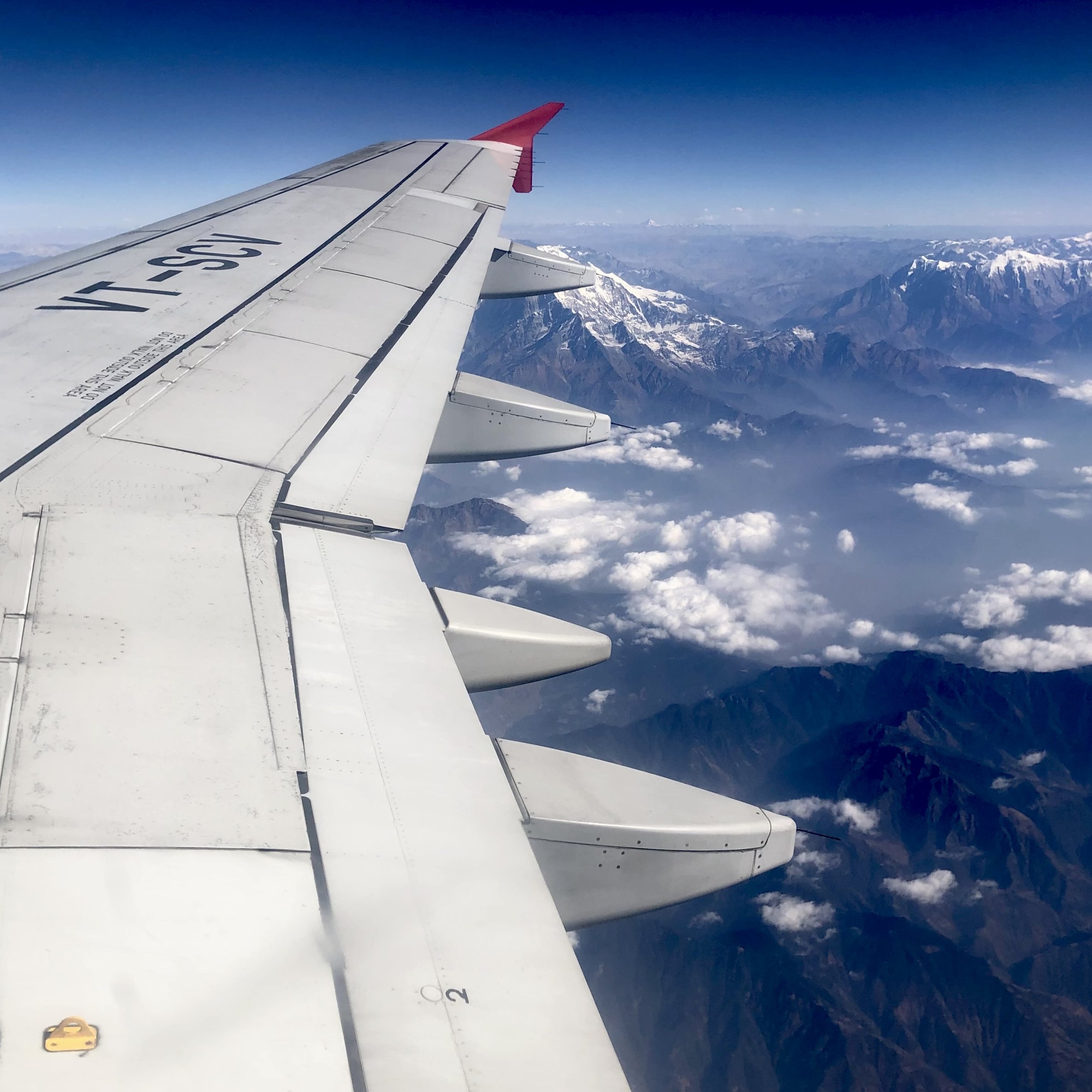

So its back to India and on to Chandigarh in the Punjab.
Sweat is Just Fat Crying - Epic Fitness Advert. Thamel. Kathmandu
The biggest surprise was to find the population of Nepal was over 80% Hindu and not predominantly Bhuddist as I first thought. The second surprise was the quietness. This is a relatively new phenomenon. Three years ago honking the horn was banned - unless you can validate its use. The traffic police have come down hard on the road traffic causing recent protests from the taxi drivers. I have to say after India, I’m enjoying not having my ears assaulted.
We are staying in the Thamel neighborhood of Kathmandu, a very popular backpackers area. Wires are strung up all over the city, but are slowly being tidied up. Kathmandu used to practice “load sharing,” so during the day there were scheduled power cuts to help conserve energy, this has nearly all been eradicated in the major cities but you still get caught out with power cuts.
The area is just one big souvenir, trekking and pashmina shop. Cheap imitations getting caked in dust. If the pashminas were real they wouldn’t be hanging on the dusty roadside. The contents of the shops are predominately out on the street, the shopkeepers hidden inside in the dim light.
Kathmandu is very, very dusty due to brick factories, building works and unfinished roads being churned up by rickshaws, motorbikes and cars. The air is constantly filled with a haze of dust that makes the air have a golden glow.
On the face of it I wouldn’t say Kathmandu is a particularly attractive city or very photogenic. However, look beyond the main shopping thoroughfare and the tourists and it’s another story - we found interesting dark narrow alleys, buildings shored up, courtyards and a calmer view of everydaylife.
We made our way to Durbar Square as suggested by the manager of our hotel in order to witness a phenomen we would never have experienced before.
How could we say no!
With only seconds to spare we made it to an inner courtyard just as the doors were shutting. About 20 of us were locked in. There was a strange air of expectation. We were told to put our phones and cameras away, quite a few times and a few times more. Photography was not allowed under any circumstances.
We were about to witness the presence of a living Goddess - the Kumari. A living reincarnation.
An old woman appears at the window to scan the group for any photography equipment and then…. a gasp from the crowd and she appeared. A young girl, a very young girl, always chosen from a clan of the Newari community to be a living Goddess.
The bejewelled Royal Kumari stared down at us. No flicker of emotion, just stared.
Officials were touching their foreheads, praying or just gasping in awe. She will carry out this role - appearing at the window each day- until she reaches menstruation age then she will no longer be a goddess and will be integrated back into society.
Throughout her Goddess life she has to pass ritual tests and be inspected for 32 specific attributes of physical beauty, including a neck like a conch shell, eyelashes like a cow, a chest like a lion, and thighs like a deer. Her eyes and hair must be black. And she must be brave.
‘The-would-be Kumaris are kept in a dark room with slaughtered buffalo heads while men dance around to monitor their levels of “fearlessness,” says a former Kumari, Rashmila Shakya in her autobiography, From Goddess to Mortal. She found the transition from being living goddess to just another girl was emotionally challenging.
Apparently Kamari tradition is frowned upon by child protection groups.
Once the Goddess had gone back inside we were allowed to take photographs then the doors were unlocked and we were set free. Well the hotel manager was right, we have never experienced anything like that before!
There are a number of beggars, but, although not rich, people do give to the most needy.
We climbed up 180 steps to the Swayambhunath temple, also known as the Monkey Temple. Swayambhunath sits high on a hill overlooking the Kathmandu Valley, it was relatively quiet and peaceful here, and the temple is beautiful.
While the 2015 earthquake was devastating, it didn’t change the heart of the city. Much of the city escaped the damage too, while the ancient parts that were hit still live on with all the character of Kathmandu. It’s not a place you can really compare to any other. While it does possess a chaos somewhat similar to India, everything else about Kathmandu is too different to really compare.
We really liked it here because of the the people. The Nepali people are very welcoming, polite, and friendly and they went out of their way to make our visit very enjoyable. It is often said that people first come to Nepal for the mountains, but return for the people.
That will most likely be true in our case!
In the meantime it’s time to pack our bags and head up the mountain.
It's better to die than to be a coward - Ghurka Recruitment advert. Bhaktapur. Nepal
Bhaktapur is a small Newar town in the Kathmandu Valley where the past meets the present. It is known as the cultural capital of Nepal, and its streets and squares are teeming with vendors selling and creating the most intricately designed woodwork, pottery and bronze singing bowls. It is also the setting for Bertolucci’s acclaimed film The Little Buddha. This heritage town attracts not only tourists but wedded couples having their official photographs taken against the beautiful backdrops.
Although temples and castles are generally not our thing, this town is remarkable in its sheer scale and beauty. This is a UNESCO heritage site. The temples have been rebuilt since the 2015 earthquake - funded by UNESCO.
Following the 2015 earthquake the surrounding old town has been rebuilt by the residents without any financial aid.
Earthquake debris lies in mounds throughout the city.
Bhaktapur is famous for the rows of grey clay pots that bask in the sun to dry.
There are two pottery squares in Bhaktapur, with a communal kiln for the potters to fire their work.
Anyone who knows me even a little bit knows my affinity for paper. Nepalese Lokta paper frequently features in my art work so it comes as no surprise that I tracked down a paper-making factory ‘coincidently’ hidden away in the back streets of Bhaktapur.
The Peacock Shop, named after the nearby Peacock Window symbolising good luck and prosperity, is a monument to the work of Mr. Prajapati who is saving much of the Newar Heritage and rebuilding earthquake damaged buildings. His premises comprises of the paper-making factory, printing and book creations and also on the top floor is the owner's collection of carvings and furniture, some of it many years old which he has saved from being lost or destroyed.
Mr. Prajapati, the owner of The Peacock Shop
Mr. Prajapati’s son, Suyog has published a handmade book describing culture and Hindu-Buddist imagery. It has been handprinted in 6 languages. It was beautiful to see the actual old letter-press machine, the layout of the pages and the plates used to print the book.
‘Glimpses of Nepal’ Book cover plate.
The Lokta grows wild at an altitude of 6500ft or above in the Himalayas.
The Lokta bark is cooked, washed and beaten into pulp before it is dyed and then spread out on the mesh frames to dry out in the sun. Some papers have flowers and leaves added.
Making the bark pulp
Dying the pulp red
Dyed lokta pulp on the mesh with petals added
Various stages of drying paper on the rooftop
The paper is then pressed to the desired thickness and texture and cut to the required size.
Giant paper guillotine
Making covers for Lokta books
Mr Prajapati has also designed a house for a potter. It is made entirely of terracotta and glows a beautiful orange in the sunlight.
Mr. Prajapati’s kiln
House made of terracotta
The Dharka Topi - a hat worn by Nepalese men is part of their national identity.
As the sun begins to fade we leave a glowing Bhaktaphur. We throughly enjoyed our visit to this artists hub and my bundle of Lokta paper will be carefully packed and taken home, eventually.
You Are Exactly Where You Need To Be - Cafe Sign. Panauti. Kathmandu Valley
Hello Nepal. Well this feels different!
Outside of temples and a starting spot for mountain trekking, I was going to Kathmandu without any real knowledge of the area. Immediately upon arrival from India, it felt different. Calmer, quieter and less chaotic.
Surrounded by incredible scenery, Kathmandu has a unique and interesting character to it when walking around the city. There’s a ruggedness to it. Many of the streets are dirt roads, the buildings aren’t in the best shape and the architecture and temples all over the city give it its own identity. There’s a mix of Nepalese culture and modernity throughout the city, while feeling you are still far away from a more developed urban life. Since the country has become government run, buildings higher than 2 storeys are now permitted. A new building era has begun.
Roads are unpredictable, Power-cuts randomly happen, it’s all part of the experience. Everybody is smiling. But before we explore Kathmandu any further we took a jeep ride out of the city.
As we made our way out of the city, brick factories and rural developments give way to rice fields on the way to the hillside village of Panauti.
Panauti is still regarded as one of the oldest towns in Nepal. It offers a poignant look at the passage of time. The crowded bus-stop in the sprawling mess of the new town gives way to small brick streets leading through a once prosperous, trading medieval city with a relatively small temple at its centre accompanied by an antiquated yet charming museum. The main visitors here, it appears, are a multitude of pigeons.
With the exception of a few motor vehicles there seems to be little evidence of modernity. Washing is done in the river, cement is made by hand, wool is hand-spun and wood is hand-carved.
Earthquakes and age have taken their toll on the village but some building renovations are underway. The tiny, lopsided doorways, hand-carved wooden structures and wonky, subsided brickwork provide a historical backdrop to the day to day chores of everyday life.
Our next stop is Bhaktapur…
After a Full Belly, All is Poetry - Slogan stitched on fabric handbag, Varanasi Market.
From what I can see, Varanasi appears a little cleaner and tidier. The more populated ghats now have bins. They are empty, but it’s a positive move nevertheless.
There are less sacred cows wandering around the alleys. I miss the cows and their noon chapati snack-time. Less cows are on the main roads which obviously helps the flow of traffic and is safer for all involved. Apparently they have been rounded up and many are kept in cow shelters.
Unfortunately the domestic cows used for milk remain tethered on a short rope unable to do anything. A static, sad life for them. There seems to be many more dogs, goats and chickens wandering around, probably enjoying the chapati offerings.
A large tented area has been erected at Dashashwamedh Ghat for the homeless to have a bed for the night - this must be very welcomed.
The new pedestrianised area next to burning ghats is a very smart, clean walkway leading from the ghats up to the Golden Temple. It blends in well with its historical neighbours. It is still has a heavy police presence.
The light in Varanasi is beautiful. Together with its faded grandeur and the abundance of Indian fabrics makes for a very beautiful palette. A palette I hope to bring into my future artwork back home.
The colour orange burns especially bright in Varanasi. It shines in the marigold garlands on the dashboards of every taxi and the robes of the sadhus – the Hindu holy men.
Saffron is the most sacred colour in the Hindu religion. It signifies fire and the burning away of impurities. Sadhus can be found on the banks of the Ganges, in alleys and in public squares. Their long white beards and brightly coloured tunics, sometimes orange, sometimes bright red, make them look so photogenic, but a picture could cost you.
The city has a huge number of sadhus. Men who have given up their regular lives, homes, relationships, material goods and chosen a life of detached poverty relying only on what people offer them. Those that carry a stick are in the final quarter of their lives and have devoted it entirely to their religion. This will be their final resting place.
Varanasi, is considered to be the holiest of the seven sacred cities in the religions of Hinduism and Jainism. Hindus believe that dying in the city will bring eternal salvation and an end to the cycle of rebirth. Pilgrims come from all over to seek purification in the sacred waters. They come to cremate their kin and to spend their final days in peace
You regularly see heads being shaved along the ghats. Within the Hindu religion, ceremonial haircuts are very symbolic, occurring during certain life events. The first is a child’s first haircut, the second is during worship and pilgrimages to special temples, and the third being the haircut during the mourning of a loved one.
A child’s first haircut, which is known as a chudakarna, ideally happens when a child is 1or 3 years old. The child’s hair is fully shaved off, or a sheikh is maintained by some Hindus - a small patch is left untouched that creates a lock of hair which is left to protect the brain, as well as the area where the soul is believed to leave the body after death.
The act of tonsuring is when hair is cut for religious purposes. Tonsuring is prevalent in the temples of Varanasi. It’s an important custom in Hinduism, as the ritual of shaving one’s head allows you to be closer to God,
The final ceremonial haircut takes place when a family member dies. The Mundan is observed by the wife of the deceased, and the eldest son or male relative who is to perform the last rites. The wife is expected to keep her head permanently shaved from now on, as a symbol of her widowhood, while the male family member is to remain shaven during the mourning period only. It is seen as a symbol of grief and a mark of respect for the departed soul.
Varanasi is a cacophony of people and atmospheric activity ebbing and flowing through the course of a day.
Preachers teaching young priests in-the-making, beggars begging, sons performing last rites, braying loudspeakers, ceremonial bathers, chanting, overheated flaming pyres, black kites circling over head, bells chiming, dogs barking… all swathed in amber hues.
Every Supermodels Favourite Ramp - Indigo Airlines aeroplane ramp. Gwalior Airport.
From Gwalior military airport, on a flight lasting no longer than it takes to eat the complimentary pot noodle we landed in Varanasi.
Our last experience flying here had left a permanent scar, so it was an almighty relief that we encountered no issues and arrived as scheduled to the same place we resided last time - Panchkote Ghat. We returned because we never saw the Ghats, they were completely submerged. Three years ago the late monsoon suddenly hit. We left with the water up to our waists, balanced on our luggage, on a rickshaw being pushed by Ranjeet and friends through the waist deep water.
This time it’s warm and dry, perfect for us to explore life on the Ghats.
Situated on the banks are the ghats, the stairs going down to a river, which create the character of Varanasi. The ghats span the length of the entire bank and you can walk along the river by weaving up and down the steps. The stairs themselves slide into the water at the bottom, with the last visible step determined by the water levels of Ganges. At several points on the ghats are large landings where much of the activity takes place.
From families gathering, picnicking, taking selfies, sleeping to bathing, praying, learning, burning and boat building it all happens here from dawn until dusk.
One of the world’s oldest continually inhabited cities. Known by three names: Varanasi - the official more recent name deriving from two Ganges tributaries forming the city's borders - Varuna and Assi. Secondly, Banaras - the old name and finally, Kashi - the ancient name found in the primary Hindu texts meaning “to shine” and shine it certainly does.
By late afternoon some ghats start to fill up in readiness for the evening ahead. Snacks, Chai, sweets, candles and flowers are readily available.
We took a boat as dusk began to settle. It was beautiful to see Varanasi from the water.
We travelled along many of the ghats finally reaching Manikarnika Ghat the biggest of the burning ghats. Between here and Harishchandra, the smaller burning ghat there are about 80 cremations a day each costing 4000 rupees. In covid a cremation cost 6000 Rps due to the risk to the people who work here at the burning ghats.
The new spires, gleaming in the evening light, indicate the modern sleek new walkway completed during Lockdown leading up to the Golden Temple. Three years ago it was just a pile of mud, with many newly discovered temples randomly sticking up out of the ground.
As darkness fell, we moored up at Dasashwamedh Ghat to witness the evening Ganga Arti. This happens every evening, every day of the week. It was held on the roof tops when we were last here so it was exciting to the Arti in all its glory.
Approximately 20,000 people gathered. It was quite a spectacle to see the boats of all sizes pushing and shunting to get their space. Afterwards it was quite a spectacle to see everyone trying to leave. 20,000 people is a lot to battle through.
Of course an easier option is to stop and have a bite to eat.
Trespassers will be shot - Painted wall Sign. Gwalior Air Force Base
After an 8 hour drive from Jaipur, we rocked up in Gwalior - a city in the central Indian state of Madhya Pradesh. We chose this place as it looked tranquil, beautiful and clean. Our accommodation was exactly that. Step outside and it was a different ball game. Gwalior is one of Modi’s many Smart Cities, where money has been invested. We thought this could be an interesting, developed place to visit. Well it’s not- in my opinion.
Gwalior is popular for its wide green cover all over the district - or so it claims. The pollution is the worst we have experienced. Little attempt appears to be made to improve the environment. The many brick-making chimneys on the outskirts create a thick dense smog that hangs over Gwalior by midday.
The lack of cars in the centre have simply been replaced by many noisy motorbikes and the planned new infra-structures have yet to have much effect. The roads are terrible in places which makes getting about slow and uncomfortable.
It’s the wedding season at the moment across India. Gwalior is a very popular place for weddings and has many complexes decorated ready to be hired. Many of the weddings celebrations we saw were taking place along the busy roadside with a piece of rope held around the dancing people.
There is a huge amount building-works on unused land around the outskirts of the city, creating sports complexes for differently-abled children, schools and housing. They are yet to be completed.
There are painted adverts everywhere, advertising education at all levels. Another element of the Smart City’s to-do list.I read that while the city has been progressing economically and financially, the availability of opportunities is apparently a lot less compared to New Delhi and other major cities. Students seeking good careers are apparently compelled to move out of Gwalior for better opportunities elsewhere. The higher level teachers do not have the required skills set.
Another Smart City plan is water 24x7 for everyone. We saw wells still being used to draw water in both town and countryside.
We ventured out on the first night to eat and unfortunately ended up with food poisoning, but on a positive note, our accommodation is a very lovely place to recover in.
The only reason tourists must venture to this part of India is to see the collection of temples out in the countryside and the rather beautiful fort looming over the town. On the way up to the fort there are the Gopachal rock-cut Jain monuments. The biggest statue reaching 57feet. They were an impressive sight.
We headed out into the countryside and visited the Bateswar Hindu Temples. A group of 200 sandstone stupas dating from the 6th century.
Since 2005, an archaeologist, KK Muhamed has restored about 60 of the temples and he is campaigning to get more done.
A school coach party arrived at the temple. They all rushed over and wanted to shake our hands. They were so excited. A lovely finish to our stay here.
Farewell Gwalior. We have a plane to catch…
Do Not Spit Here and There - Lodhi Garden sign. New Delhi.
Two things I’m particularly drawn to in India are tuk-tuks and signage. I do love a tuk-tuk drive, except that is when you have a young hot-headed road racer with a turbo charged tuk-tuk hurtling across the Delhi roads. One white knuckle ride is probably enough. We soon realised that an older driver is a wiser driver and a lot slower. This gentleman seemed quite bemused that we adopted him as Mr Tuk-Tuk. He didn’t know the way to many places, but that was unimportant.
A visit to the beautiful Lodhi Gardens proved to be both relaxing and very informative.
Finally we found the Indo-Islamic style tombs and the garden. Apart from history and beauty, Lodhi Garden is a fitness hotspot.
I’m not surprised that everyone, including the dogs, needed a rest. This really is a bit of an oasis in an otherwise noisy, crowded, dusty city.
A walk round a lovely lake and a bit more reading to finish off.
Lodhi Estate Security
No shop yet, but a very sparkly new sign. Luckily our local shops have everything we need.
'I found My Tokyo' - Travel Agency Slogan. Tokyo.
The final chapter of an incredible journey.
We’d had enough of the noise, so we gave up the flat and moved into a hotel to finish off our trip in a bit more comfort.
We booked a hotel on-line, using the same sight we have booked all other hotels. It advertised ‘Superior Twin bed room (sleeps 3-4).’ Sounded ideal - spacious and quiet.
Turns out, when we arrived, the price quoted was for two beds, one person. With huge fees for additional people. How can this be allowed? The online booking company told us it was the hotel’s set of conditions and not their responsibility for misrepresentation of facts. They would not let us raise this issue as a warning to others on their media forum. It was banned.
So, bed 21 brings us to our final couple of experiences and these both took place late at night.
So it seems to me that Japan’s life is about art and culture, anime paradise, crazy technology and a very large sex industry. Kabukichō is the location of many host and hostess clubs, love hotels, shops, restaurants, and nightclubs, and is often called the ‘Sleepless Town’. This red light district is not quite as explicit as other cities in Japan, but it comprises of many, many hotels advertising stay, rest, or sleep.
The adult entertainment is hidden behind closed doors, with only a few touts hanging around outside. The red light area has been absorbed into the vastness of Shinjuku - the most central entertainment area in the metropolis of Tokyo. Tourists are encouraged and generally get ripped off with almighty final bills. Not quite as obvious to see are the many places that remain for Japanese only. Foreigners are not welcome.
What has recently emerged are young male Japanese escorts and clubs for females to enjoy their company. The derogatory imaging has become more anime in style.
It still bewilders me that a society that appears so shy, conservative and introverted has such a huge countrywide sex industry, with so many loop-holes to avoid the illegalities.
Kabukicho is apparently crowded with members of the Yakuza, the Japanese mafia. Yakuza members run a large amount of the bars and clubs here. This is why, for the first time in Japan, I have seen policemen patrolling this area. The Yakuza have a scary reputation and tourists are warned not to cause any trouble.
Time for one last adventure and this took place in Kawasaki…
Keihin Industrial Ward is a futuristic landscape. We attempted to make our own way there so we could roam around the eerie never-ending maze of factories belching out fire and smoke 24 hours a day. Unfortunately this wasn’t to be. We found the correct train routes, but they were closed due to an accident. Everywhere was gridlocked and the trains were terminated. We weren’t going to give up and took the next best option - a freezing Japanese boat tour. We could only take the late night one, so not great for photography and we were unable to land anywhere. We have no idea what information was given to the few brave passengers as there were no translations. The views were staggering. Straight-out of Final Fantasy.
This heavy industry concentrated in the Kawasaki-Yokohama harbour area, includes steel mills, oil refineries, petrochemical complexes, and shipyards. Major land-reclamation projects in the bay have created room for the industrial expansion.
There are massive questions on its environmental pollution.
So that is it. Three months travelling complete. Back to England - a little wiser, more knowledgeable and a great deal to think about.
'It’s dangerous to walk whilst using a tablet'. - Train rules. Kanazawa.
On Japan’s west coast facing the cold winds of Mongolia is Kanazawa. Our penultimate destination. It was kept off the tourist map for a number of years, but thanks to the bullet train it’s now easily accessible. It’s very compact, a smaller version of Kyoto and a lot colder.
Our authentic bijou, traditional Japanese Air BnB accommodation turned out to be a container unit. Lined with tatami mats, it was actually quite cosy once the heating was on. Unfortunately the bathroom was almost inaccessible. The walls and windows were paper thin - a typical example of Japanese short-life building.
Higashi Chaya is a whole neighbourhood of beautifully preserved geisha houses. The geishas have now left and their houses have become restaurants, teahouses and many identical souvenir shops. There are many kimono wearers to be seen wandering around the town, but these are all rented ones.
Kenrokuen Garden is almost 30 acres and forms the green heart of Kanazawa. It’s ranked by the Japanese as one of the three perfect gardens in the country and ‘it’s a fine place for a peaceful and contemplative walk’.
Kenrokuen means “six attributes garden,” which is a reference to a Chinese book that describes the six attributes of the perfect garden. As you wander around you discover perfect viewpoints, traditional teahouses and water used in different ways, all tucked away. It is not the size that is breathtaking, its that every angle has a truly amazing view, almost in a surreal way.
It was perfect. Perhaps a little too perfect?
Throughout Japan’s towns and cities almost every bush and tree has been perfectly manicured or trained to grow in a particular way. Surely the beauty of nature is nature itself?
Digital birdsong in a garden with no wildlife, except for coy carp, is a complete mystery to me.
The garden has tea-ceremonies performed in the traditional teahouses. They are a bit strange to see - there’s multiple ones going on simultaneously. The buildings shutters are open so all the tourists can watch the tourists having a private ceremony.
But the uniqueness of Kanazawa we found were its conical trees. A visual spectacle like nothing we have seen before.
As the colours of autumn foliage deepens, November 1st hails the beginning of the winter preparations. Its a very labour intensive busy spectacle called Yukizuri.
Snow that falls in the winter of Kanazawa is heavy in weight because the snow contains a large quantity of moisture. In order to prevent the branches of the beloved Karasaki pine trees from breaking, Yukizuri is performed. This is a method of protecting the branches with ropes attached in a conical arrangement to the trees. Skillful gardeners use more than 800 ropes to give Yukizuri to the pines.
Gardeners on-top of the supporting poles throw out the ropes one by one until perfect cones of ropes are formed. Work continues round the city to mid-December; the Yukizuri ropes are left in place until March, when the heaviest snows finally stop falling.
It adds a surprisingly elegant touch to the garden’s winter scenery.
All around Kanazawa, these conical forms are being erected over trees, hedges and bushes . The great walls of the castle are also covered in woven matting to protect the stone. The town is literally wrapped up for winter.
How I would love to see this place in the snow, we were so close, it is was very much colder over this side of Japan. We were, however, pleased to see the colours of late Autumn.
In complete contrast, Kanazawa is known for its fresh fish and Omichi Market is where the locals all go in the mornings before the tourists arrive. The harsh fluorescent lighting indoor lighting and the shouting of the market traders makes this a completely different visual experience.
So we have reached the final leg of our unforgettable journey. Our last ride on the Bullet Train to our final destination - Tokyo.
'Make your own octopus'. - Google Translate - Adult Parlour sign.
After the quietness of Nagasaki we went in search of the nightlife Hiroshima has to offer. It’s a nightlife of food and drink and every type of adult ‘other services’. High-end designer shops and restaurants sit adjacent to street stalls and sexshops. It’s visually a strange combination.
The red light district is different here to other cities we have seen, it’s amalgamated into the eating and drinking area. During the daytime the place is almost deserted but at night it comes alive with crowds looking for fun, food and drink. Layer upon layer of multiple floors lit with Neon signs and taxis ferrying people back and forth are everywhere.
Everything you need for you evening’s entertainment is on the main drag, even a milk parlour.
The narrow backstreets are very dark and home to the really seediest looking parlours.
The images are concerning, photographs of really young women are pasted outside the shops with price lists and offers. Touts stand in the doorways actively go out and rein in customers. Girls are transported to and fro in taxis.
Prostitution is open business here in Japan.
We being jazz fans we ventured into a bar it was called the ‘Charles Mingus Jazz Bar - With Taped Music’. A tiny green velour room with 4 empty stools left at a bar. The hostess lunged at us with a laminated sign informing us 4000 yen entrance fee, drinks on top. We left the two guests to enjoy their own company.
Next on our tour we are leaving the mainland for Shikoku Island.

